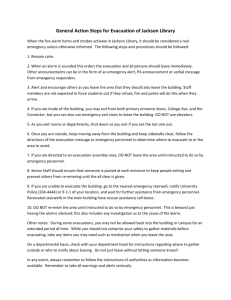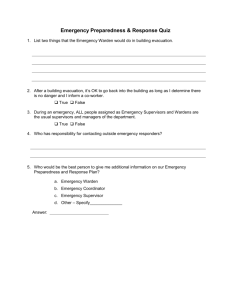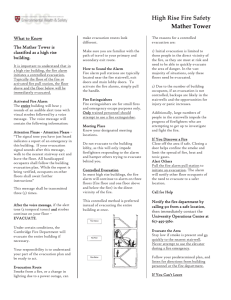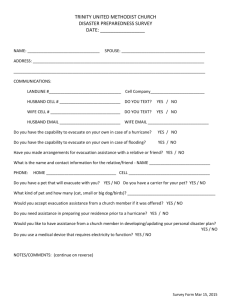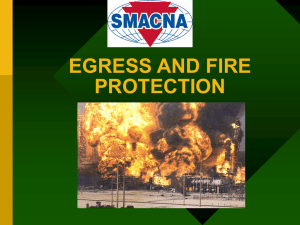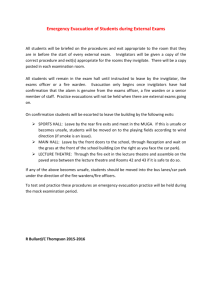Facility Evacuation Procedures
advertisement
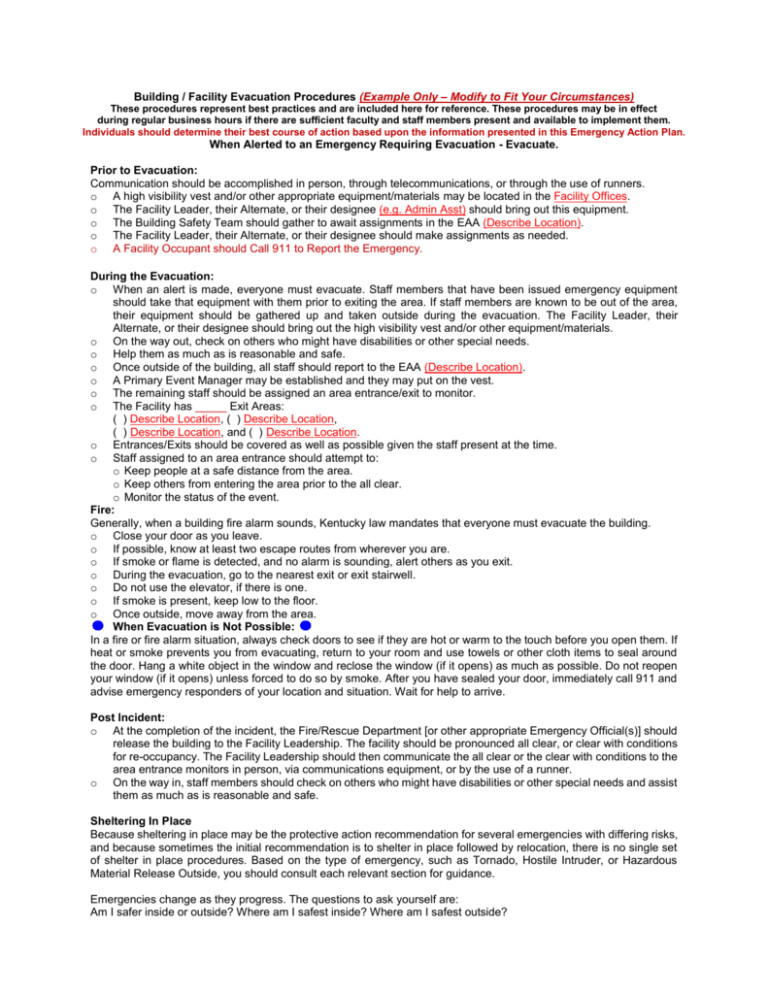
Building / Facility Evacuation Procedures (Example Only – Modify to Fit Your Circumstances) These procedures represent best practices and are included here for reference. These procedures may be in effect during regular business hours if there are sufficient faculty and staff members present and available to implement them. Individuals should determine their best course of action based upon the information presented in this Emergency Action Plan. When Alerted to an Emergency Requiring Evacuation - Evacuate. Prior to Evacuation: Communication should be accomplished in person, through telecommunications, or through the use of runners. o A high visibility vest and/or other appropriate equipment/materials may be located in the Facility Offices. o The Facility Leader, their Alternate, or their designee (e.g. Admin Asst) should bring out this equipment. o The Building Safety Team should gather to await assignments in the EAA (Describe Location). o The Facility Leader, their Alternate, or their designee should make assignments as needed. o A Facility Occupant should Call 911 to Report the Emergency. During the Evacuation: o When an alert is made, everyone must evacuate. Staff members that have been issued emergency equipment should take that equipment with them prior to exiting the area. If staff members are known to be out of the area, their equipment should be gathered up and taken outside during the evacuation. The Facility Leader, their Alternate, or their designee should bring out the high visibility vest and/or other equipment/materials. o On the way out, check on others who might have disabilities or other special needs. o Help them as much as is reasonable and safe. o Once outside of the building, all staff should report to the EAA (Describe Location). o A Primary Event Manager may be established and they may put on the vest. o The remaining staff should be assigned an area entrance/exit to monitor. o The Facility has _____ Exit Areas: ( ) Describe Location, ( ) Describe Location, ( ) Describe Location, and ( ) Describe Location. o Entrances/Exits should be covered as well as possible given the staff present at the time. o Staff assigned to an area entrance should attempt to: o Keep people at a safe distance from the area. o Keep others from entering the area prior to the all clear. o Monitor the status of the event. Fire: Generally, when a building fire alarm sounds, Kentucky law mandates that everyone must evacuate the building. o Close your door as you leave. o If possible, know at least two escape routes from wherever you are. o If smoke or flame is detected, and no alarm is sounding, alert others as you exit. o During the evacuation, go to the nearest exit or exit stairwell. o Do not use the elevator, if there is one. o If smoke is present, keep low to the floor. o Once outside, move away from the area. When Evacuation is Not Possible: In a fire or fire alarm situation, always check doors to see if they are hot or warm to the touch before you open them. If heat or smoke prevents you from evacuating, return to your room and use towels or other cloth items to seal around the door. Hang a white object in the window and reclose the window (if it opens) as much as possible. Do not reopen your window (if it opens) unless forced to do so by smoke. After you have sealed your door, immediately call 911 and advise emergency responders of your location and situation. Wait for help to arrive. Post Incident: o At the completion of the incident, the Fire/Rescue Department [or other appropriate Emergency Official(s)] should release the building to the Facility Leadership. The facility should be pronounced all clear, or clear with conditions for re-occupancy. The Facility Leadership should then communicate the all clear or the clear with conditions to the area entrance monitors in person, via communications equipment, or by the use of a runner. o On the way in, staff members should check on others who might have disabilities or other special needs and assist them as much as is reasonable and safe. Sheltering In Place Because sheltering in place may be the protective action recommendation for several emergencies with differing risks, and because sometimes the initial recommendation is to shelter in place followed by relocation, there is no single set of shelter in place procedures. Based on the type of emergency, such as Tornado, Hostile Intruder, or Hazardous Material Release Outside, you should consult each relevant section for guidance. Emergencies change as they progress. The questions to ask yourself are: Am I safer inside or outside? Where am I safest inside? Where am I safest outside?



